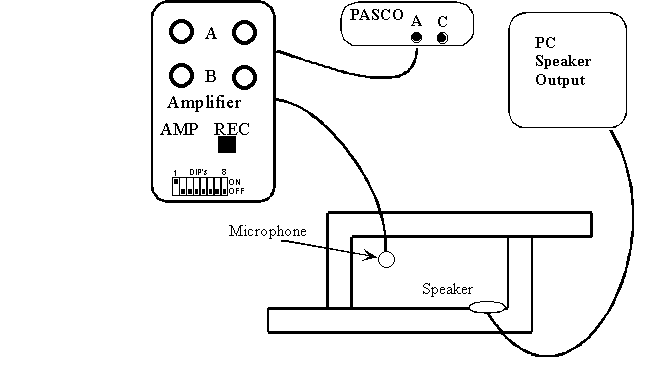
Laboratory #5: Sound Waves in a Rectangular Cavity
Objective:
So far, we have only considered waves in one dimension. Waves in two dimensions are quite common (like the head of a drum). In this experiment, we will find the resonant modes of a thin rectangular cavity. This is pretty close to a two dimensional system and the pattern of overtones can be quite complex. We will measure the resonant frequencies, as in Lab 3, but this time, we will use a more sophisticated technique. The results can be obtained more rapidly and more accurately, allowing us to perform a much better analysis. In this experiment, we will play a sound file that sweeps in frequency from 0 Hz to 5,000 Hz, at a rate of 200 Hz/sec. While this is playing, the PASCO software will record the amplitude of the signal from the microphone. This will trace out all of the resonances of the cavity. To find the resonances, you will simply need to place the cursor at the peaks and record the values. Remember:
frequency× wavelength = velocity.
Equipment:
Diagram:

Instructions:
DATA:
EXPECTED FREQUENCIES:
Use v = 343 m/sec.
f = (n× v)/(2× L)
|
Length 1 (meters) |
Length 2 (meters) |
||
|
Frequency 1 (Hz) |
Frequency 2 (Hz) |
Combination Frequency (Hz) |
|
MEASURED FREQUENCIES:
|
Time of Peak (sec) |
Measured Frequency (Hz) |
Expected Frequency (Hz) |
Ratio: Measured/Expected |
Questions:
Speed of sound = (331.3 + 0.6T) m/sec
where T is the temperature in ° C
See if your measured speed of sound agrees with this by measuring temperature in the room.